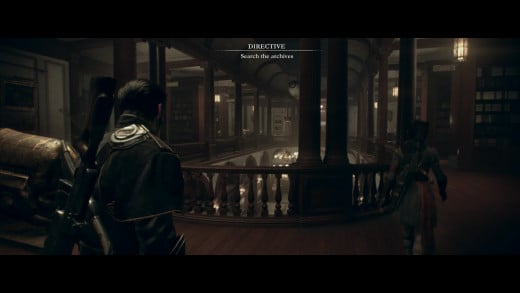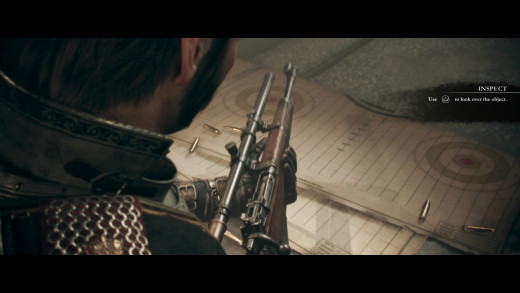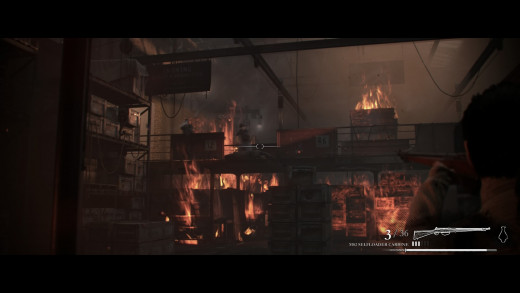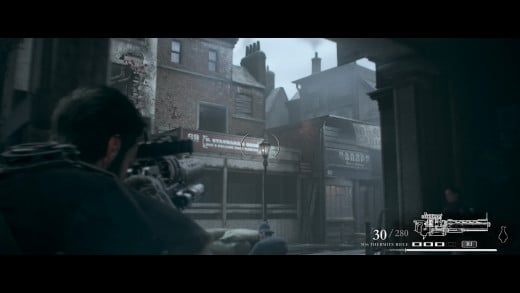The Order: 1886 - Review


With The Order: 1886 video games have finally manage to come full-circle. Here's Dragon's Lair for 2015.
The first interaction you get in The Order: 1886 comes from a quick-time event. As your mysterious protagonist escapes from jail, your sole inputs come from a few quick button presses, and the option to push up on the analog stick in order to move forward. This tutorial chapter, sums up Ready At Dawn's game succinctly. This isn't a game you play so much as watch.
Taking place in an alternate past, where Britain not only has access to strange steampunk contraptions, but also succeeded in finding the Holy Grail, the Knights of the Round Table are tasked with hunting down werewolves and vampires. You play as one of the fabled knights, Sir Galahad, a gruff, no-nonsense military type in a game filled to the brim with clichéd characters.
If things already sound familiar that's because they've almost all been done before. The game's depiction of London is a bland, boring replica of Dishonoured's art style; pulling the key aspects; the funky technology, the slightly Gothic vibe, but doing so in a way that kills all sense of personality. Similarly, the attempt to create an alternate history comes straight out of the Assassin's Creed handbook, with the Knights of the Round Table effectively being this game's equivalent of the Templars.
You're rarely alone during each of the games chapters and are usually required to follow someone somewhere, resulting in bouts of bland, boring banter, as the game tries to breathe life into its cardboard cut-out cast.
Galahad is frequently sent out on missions with his "squad", a word that's frequently used throughout the game but feels completely out of place in what's supposed to be 19th century England. This group includes Igrane, a fellow knight and Galahad's love interest, and Marquis De Lafayette, a French aristocrat and knight-in-training. I'd talk more about these characters if they had any more depth, but frankly, they don't. The Order: 1886 wants to be the next Uncharted or The Last of Us, but lacks all of the interesting writing we'd need to be even faintly interested in its characters.

Sadly there's very little left of The Order once you strip away the narrative that underpins it. The Order: 1886 draws on the Uncharted/Gears of War formula for the few times there's actual gameplay. Interactivity is kept to an absolute minimum however, with the majority of chapters simply having you move forward and take part in the occasional gunfight. The game's combat is the third-person shooting at its most bland. It lacks any kind of visceral punch or unique tweak to the standard formula.
Very occasionally the game will let a sliver of creativity sneak out and leverage the steampunk setting by giving you access to some fancy weapon. In particular the game's flamethrower was something of a treat. The firing mode fills an area with flammable gas, and the secondary fire launches a small rocket to ignite the area. Sadly, these unique weapons are only doled out when the game demands it. The Order: 1886 is terrified of having you think for yourself, and its combat sections largely seem to exist as nothing but padding. Boring filler until the next barrage of cutscenes.


Even worse, for a game whose universe features werewolves and other monsters, almost every combat scenario pits you against ordinary humans. It's a classic example of a game's story having ideas but the gameplay being unable to represent this. Combat with werewolves and "half-breeds" are few and far between, and suffer from the game's mediocre combat system being simply incapable of handling anything other than men shooting at you from behind boxes.
Likewise, many major encounters result in nothing more than a fancy QTE, as you jab buttons in line with on-screen prompts. Worse still, one quick-time fight is recycled for the final encounter in the game, using essentially the exact same inputs and animations, albeit in a slightly different room.
To put it simply, The Order: 1886 is a gorgeous-looking mess. Its story is what it purports to focus on, but is full of bland characters and poorly thought-out motives. Even more frustrating, it ends in what can only be described as sequel-bait, leaving numerous loose ends and cribbing most of its ending off of Christopher Nolan's The Dark Knight. It's a silly story that has you traipsing around doing very little for around six or so hours and hopes that the pretty visuals and slick animation will trick you into thinking it's all really fun.
Meanwhile, its gameplay acts as nothing but filler and somehow manages to be cast in the entirely wrong genre, with the third-person gameplay feeling like nothing more than half hour loading screens until the next batch of cut-scenes mingled with a few quick-time events.
Having a game focus less on actual gameplay and more on story and characters is not always a bad thing. Telltale Games have shown just how impressive this can be, and classic adventure games have similarly been story-oriented since their inception. The problem with The Order: 1886 is that it not only manages to be bad but also tries to come across as if it's the most important game ever committed to disc.
Being bad is one thing, but being bad and pretentious. Well, that's much worse.
The Order: 1886 was released on February 20th, exclusively for the PS4.
© 2015 LudoLogic








